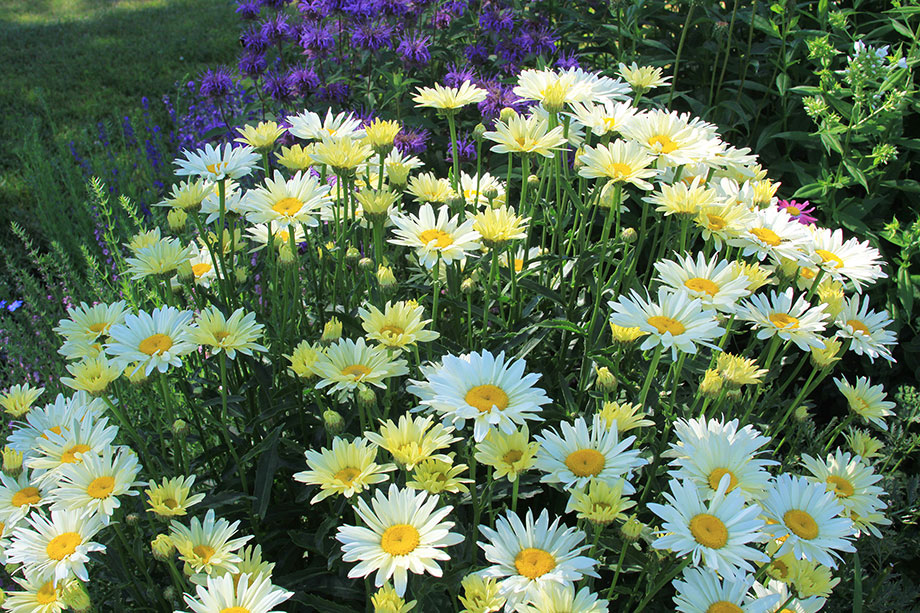Column: Bombproof Perennials

I enjoy growing all sorts of flowers: annuals, perennials, bulbs, flowering shrubs – you name it. Some require a bit of care while others are so easy to grow! I wrote about the latter – which I like to call bombproof perennials – for today’s garden column. I garden in hardiness zone 5b so that is definitely one of the criteria for me.
Chances are, there are few perennials that you grow but I didn’t mention them. I know we all have our favorites but I think you’ll agree that the ones listed below are pretty darned amazing!
The plant names are listed alphabetically by their common name but I’ve provided their Latin names, just in case that’s how you know some of them.
by Susan Mulvihill
I have a lot of wonderful perennials in my garden. Every spring, it is a treat to watch them emerge once again from the soil and add colorful flowers to the landscape.
Perennials are herbaceous plants that come back year after year and die back to the ground every winter. Of course, it helps if you select ones that are hardy enough for this region. Spokane is in hardiness zone 6a although many outlying regions tend to be in zone 5b.
While I enjoy all of the flowers, here are some particularly bombproof plants that are both easy and rewarding to grow:
Bee balm (Monarda didyma) _ There are so many reasons to love this plant. The flowers are enchanting and come in red, pink, purple, lavender and white. Bees, other pollinators and hummingbirds appreciate both the nectar and pollen they produce. The foliage has a delightful citrusy scent. Bee balm is a sun-loving plant that will tolerate somewhat dry conditions but does need to be watered 2 to 3 times per week. They range in height from 12 to 48 inches. Hardiness zones: 3 to 9.
Daylily (Hemerocallis) _ Prized for their pretty trumpet-shaped blooms, daylilies are truly low-maintenance plants. They are available in a wide variety of colors, with some flowers being fragrant or repeat bloomers. They will grow in full sun to part shade and require regular watering although will tolerate occasional dry spells. Depending on the variety, they can grow from 12 to 48 inches in height. Hardiness zones: 3 to 10.
False goat’s beard or false spirea (Astilbe) _ These are great plants for partial shade. Mine only get morning sun but grow beautifully. I love the plant’s lush, fernlike foliage and when they’re in bloom, those flower spikes really draw your attention. Color choices include white, pink, magenta and red. The plants require regular watering and well-draining soil, and will grow up to 30 inches tall. Hardiness zones: zones 4 to 9.
Lady’s mantle (Alchemilla mollis) _ When it rains, this plant will endear itself to you because its parasol-shaped leaves hold droplets of water in an enchanting way. In late spring, yellow flower clusters emerge from the plants. A word to the wise: if you don’t remove the spent flowers before they dry and form seeds, you will end up with hundreds of plants. Because of this, I’m always highly motivated to take care of that chore promptly. Lady’s mantle will grow in full sun to part shade. It needs regular watering and will grow up to 2 feet in height. Hardiness zones: 3 to 8.
Shasta daisy (Leucanthemum) _ It’s impossible not to smile when this plant is in full bloom because it is perkiness personified. Most varieties feature white petals and a central yellow disk. Two of my favorites are Banana Cream which has light yellow petals and Sweet Daisy Birdy with its slightly ruffled center; I’ve found the latter excels as a cut flower. Shasta daisies can grow 3 to 4 feet tall and need to be watered regularly. Hardiness zones: 5 to 9.
Stonecrop (Sedum, Hylotelephium) _ The succulent leaves on these perennials are a dead giveaway that they can handle sunny, dry conditions. These plants typically bloom in late summer and early fall. My favorites are Autumn Joy and Matrona, which feature lovely flower heads and reach up to 2 feet in height. Hardiness zones: 3 to 9.
Susan Mulvihill is author of “The Vegetable Garden Problem Solver Handbook” and “The Vegetable Garden Pest Handbook.” She can be reached at Susan@SusansintheGarden.com. Watch this week’s video at youtube.com/susansinthegarden.

